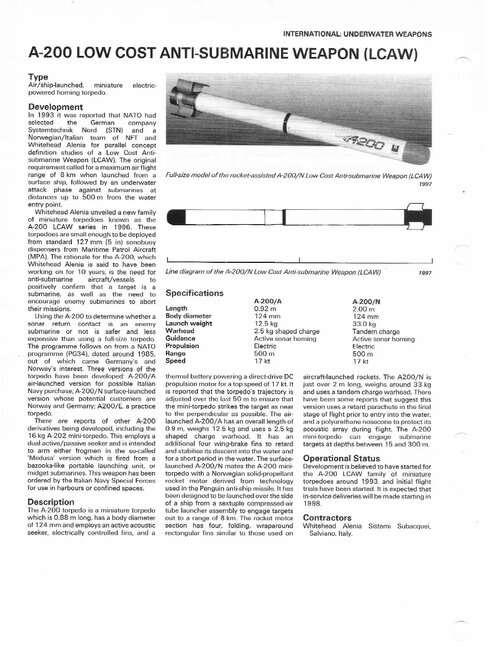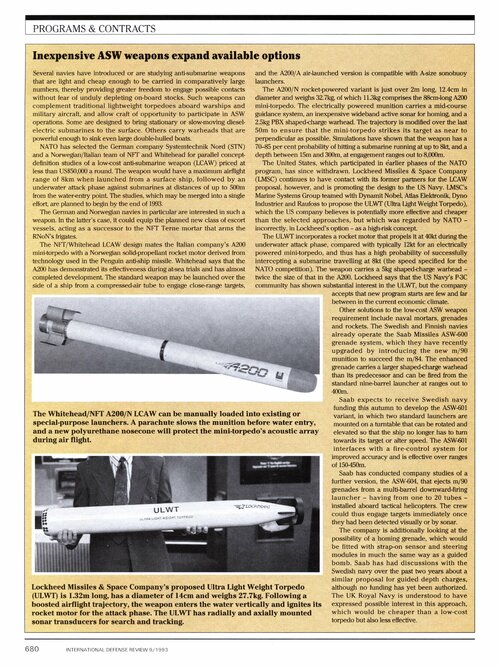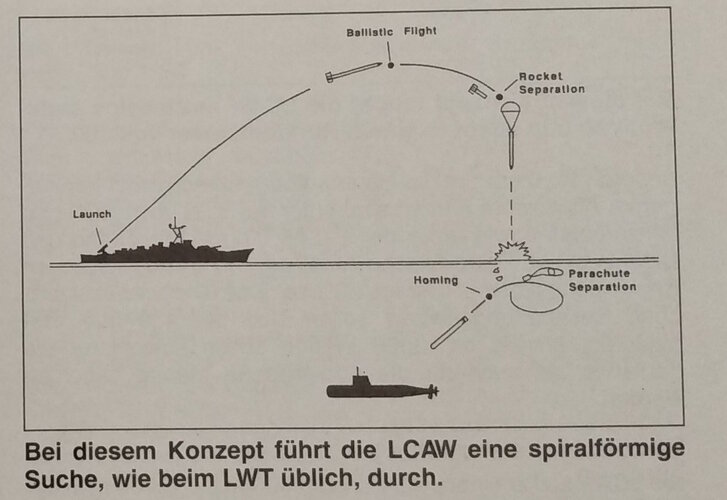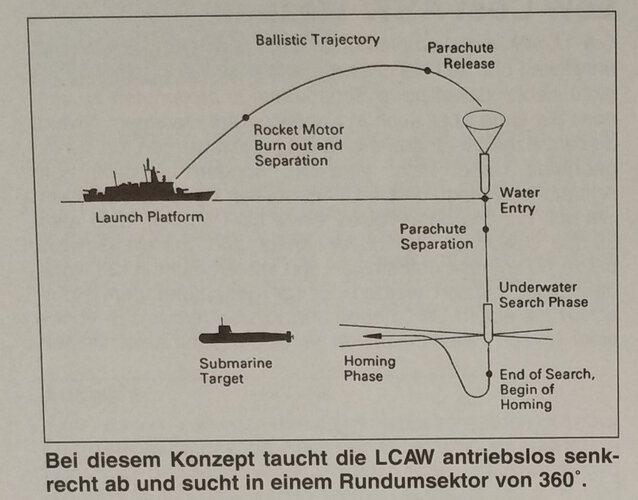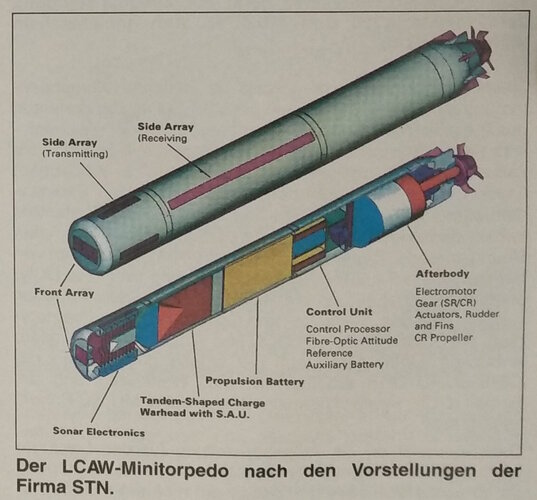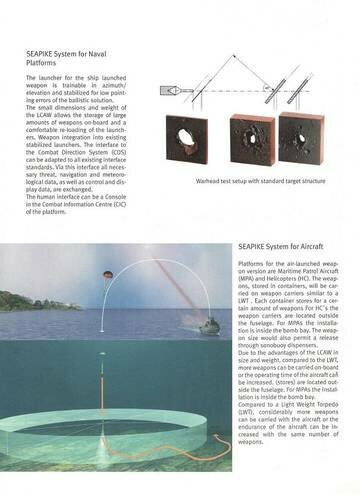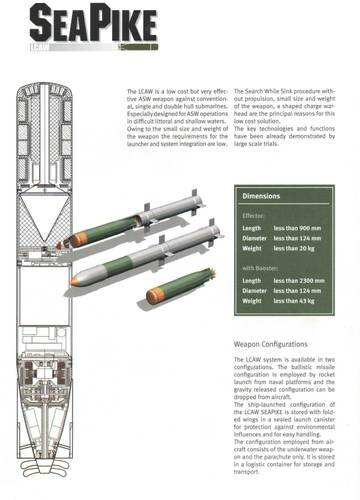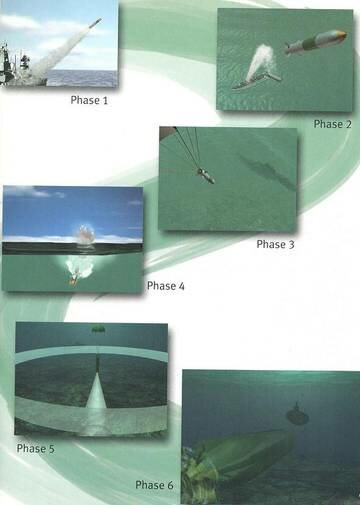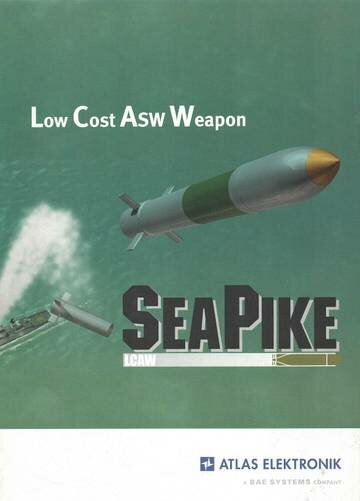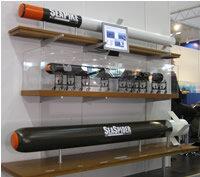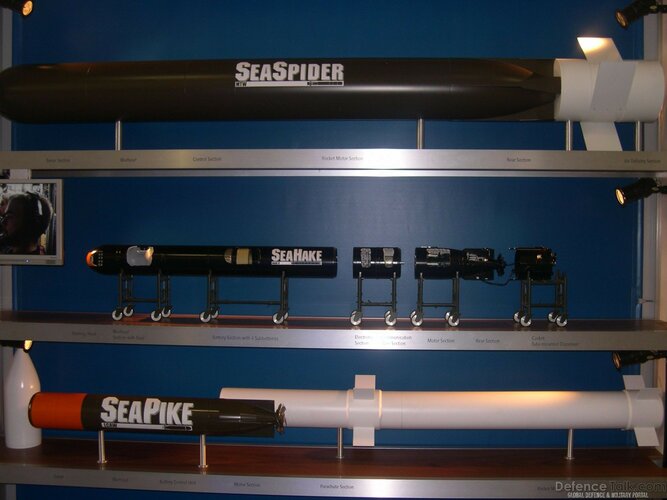Voltzz
ACCESS: Secret
- Joined
- 10 April 2021
- Messages
- 366
- Reaction score
- 1,214
LCAW was a NATO program for an small torpedo, cheap/expendable enough to be use against unidentified/unverified sonar contacts. It was supposed to have both rocket-launched and helicopter-dropped version.
At first it was a trilateral US, German Norwegian project, but some point ~1990 The US dropped out.
There seem to have been 3 development teams with the US led one only participation in the first phase:
The article also mentions a very interesting even smaller variant for Special Forces, fired from a handheld launcher.
At first it was a trilateral US, German Norwegian project, but some point ~1990 The US dropped out.
There seem to have been 3 development teams with the US led one only participation in the first phase:
- NFT (Kongsberg), Whitehead (WASS) and Diehl(?) with the A200
- Lockheed, Dynamit Nobel, Atlas Elektronik, Dyno Industrier and Raufoss with the ULWT (Ultra Light Weight Torpedo)
- STN, HEN and Rheinmetall (later called SeaPike)
The article also mentions a very interesting even smaller variant for Special Forces, fired from a handheld launcher.
Attachments
Last edited:

